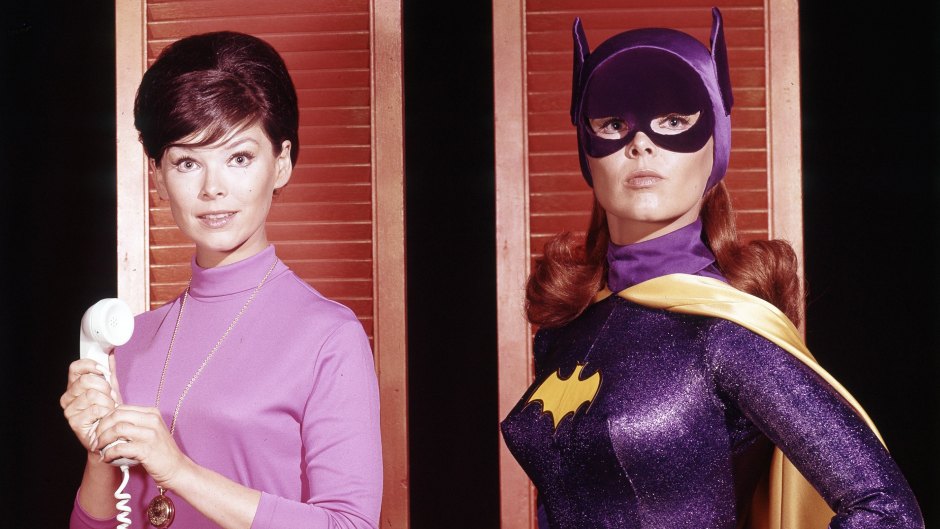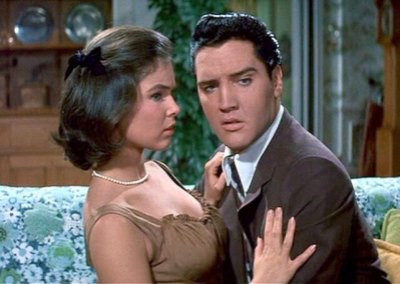
Getty Images
From Elvis to Batman, Here’s What Happened to Yvonne Craig Before, During and After Playing Batgirl
Less than a year before her passing in 2015, actress Yvonne Craig was chatting with Closer about the enduring nature of the Classic TV series of the 1960s Batman, starring Adam West in the title role, Burt Ward as his sidekick, Robin, and Yvonne herself in the dual role of librarian Barbara Gordon and TV’s first superheroine, Batgirl. The complete 1966 to 1968 superhero series had been issued on Blu-ray at the time, which explained the excitement about the show at the moment, but not the fact that people still loved it so many decades after its debut.
“Part of it,” Yvonne reflected, “is that it was a sign of our times. Everyone would like to go back to the time of ‘Flower Power.’ You know, rather than blowing people up in all these different places like they are in the world, people are looking for an escape. And this is not only an escape, but it’s silly and fun and filled with pretty colors. That certainly helped to interest the kids, because they did like the bright colors and all of that camera work, and there was something in it for their parents. The adults weren’t just sitting there saying, ‘Oh my God, another kid’s show!’”

Yvonne was born on May 16, 1937 in Taylorsville, Illinois, though she was raised in Columbus, Ohio. The family moved to Dallas, Texas in 1951. Much of her early life was filled with dancing in the hopes of being a ballerina. She was discovered by ballerina and instructor Alexandra Danilova, which led to her becoming a member of the Ballet Russe de Monte Carlo as its youngest member — which she would say helped her tremendously when she was eventually cast as Batgirl. She left the group in 1957 and made the move to Los Angeles in the hopes of continuing to dance professionally, but found herself drawn to acting, which would eventually lead to co-starring with Elvis Presley and, of course, joining Batman.
Pop culture historian, performer and author of such books as Ella: A Biography of the Legendary Ella Fitzgeerald and The Lucy Book Geoffrey Mark, offers, “Yvonne played a very successful series of ingénues, both sweet and wicked in the late 1950s and early 1960s on television in things like Perry Mason, where she really got to show her acting chops. And more often than not, what she was playing in were dramas. There were a few comedies thrown in, but she was usually the 16 to 18-year-old girl who inherits some money, or the sexy 19-year-old who’s having an affair with a married man. She was very successful in them and worked consistently in a way, by today’s standards she was probably making a couple of hundred thousand dollars a year. I don’t know how many different parts she played on Dobie Gillis, but they liked her so much they kept bringing her back as different characters. She did two films with Elvis and continued to do more general TV.”
Please scroll down for much more on Yvonne Craig
Be sure to check out and subscribe to our Classic TV & Film Podcast for interviews with your favorite stars!

David F Smith/AP/Shutterstock

Getty Images

Getty Images

Shutterstock

Getty

20th Century Fox/Greenway/Kobal/Shutterstock

20th Century Fox/Greenway/Kobal/Shutterstock

Getty

20th Century Fox/Greenway/Kobal/Shutterstock

Walter Brown/ANL/Shutterstock

Shutterstock

Getty

Paramount Television/Kobal/Shutterstock

Paramount Television/Kobal/Shutterstock

Getty

Sipa/Shutterstock

Peter Brooker/Shutterstock

Getty

20th Century Fox/Greenway/Kobal/Shutterstock

Shutterstock

Fox/Abc/Kobal/Shutterstock










































